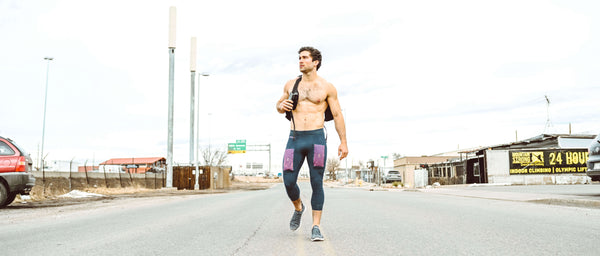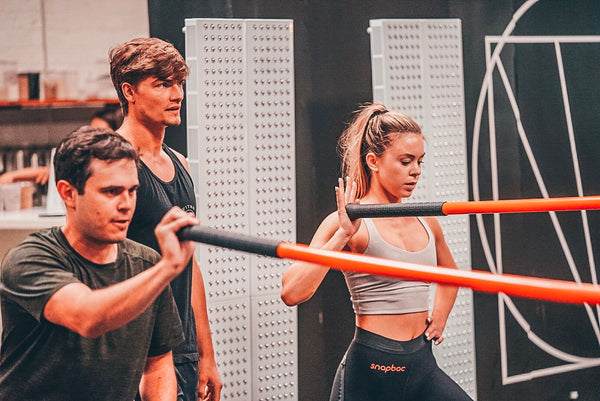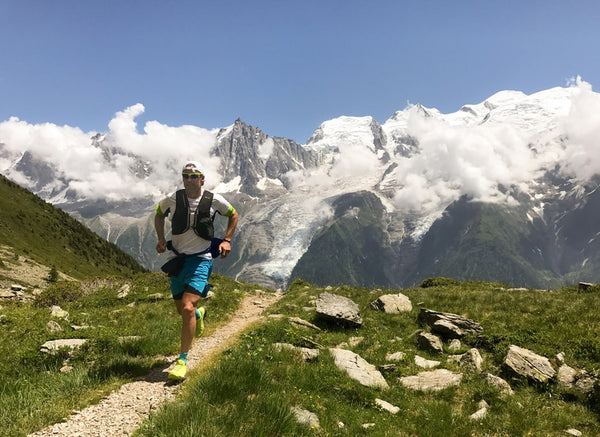Overview
Soccer is a team sport, and to be the best, you need to train with a team, but that doesn’t mean you can reach the top by only attending the team practice. When any athlete decides to dedicate themselves to the game, they make the choice to eat it, sleep it, breathe it, and live it every moment as they fight, scramble, and push their way to the top. This means you need to be glued to the soccer ball every moment your feet are out of bed. How you move and train need to be creative, fast-acting, and personalized if you don’t live in a team house. That’s why we asked around to find the top soccer drills to perfect your offense and ramp up your defense with you, the ball, and a whole lot of time!
Improve your Offense with these 3 Soccer Drills
Every great athlete in every sport achieved their dreams because they had dedication and millions of hours of practice. This training didn’t stop when the coach called it a day. They spent every extra hour and minute going through plays, improving both offense and defense, practicing drills, honing their natural talent, and improving any weakness they could find. Choosing to be an athlete is more than getting to spend your life playing your favorite game. It’s grueling work, wearing down your body to the point of exhaustion, and then getting up and doing it all over again. This is why we love athletes. You challenge yourself to do more than the average human because you’ve decided you can.
When it comes to soccer, or football for many parts of the world, the training is no less, the preparation no easier. It can be challenging, as with many team sports, to find ways to continue improving your game when the team practice has ended, especially in regard to playing offense. This doesn’t mean you can’t find some cones and get to work. We have compiled some of the best soccer drills for you to master at home, on your lunch break, or with a friend.

Benefits of Individual Soccer Training Drills
You may be wondering what benefits would come from practicing soccer training exercises on your own when this is clearly a team sport. How could you possibly improve your offense or defense when there’s no one else around to play against. You can’t watch how their bodies move or analyze the layout on the field. Does it really matter how long you can juggle the ball when no one is there trying to take it from you? Yes!
The best players are those who understand their body and the ball. It’s a lot harder to tackle and steal from someone who has mastered control of the ball and how to maneuver his or her body in unison with the ball. You don’t want your first chip pass to fall short and become a direct pass to a defender! It’s much better to practice these things with a wall or a friend before hitting the field with a head full of ideas that haven’t been perfected.
Top Tips from the Coach
-
Spend as much time with the ball as you can. It should be glued to your feet.
-
When attacking, aim for the space behind the defender using any means available, shooting, dribbling or passing.
-
If you know you can’t score, always pass to someone who has a better field position.
-
Learn from watching the best. That’s right; some of the best practice comes from watching others.
-
Place as large of an area of the body behind the ball as possible for more control.
-
Get in line with the flight of the ball quickly and already have an idea of how you are going to control it, thigh, head, feet, or chest.
-
Learn to receive the ball at any height.
-
When you make contact with the ball, relax that part of your body to receive and cushion the ball to keep it from bouncing.
-
If you can receive the ball and control it, you buy time to pass or dribble.
-
Make quick attacking decisions when passing or shooting the ball.
As you can see, coaches agree that ball control is what can make or break your success as a soccer player. These are not skills that take a team to practice. This is about you and the ball.

1. The Best Attackers Have Mastered Dribbling
Dribbling is a fine art, and the more you practice, the better you will be at pushing through the defense and maintaining control of the ball. This is all about close, tight control while running with the ball, keeping keen spatial awareness and maintaining control with last second twists, turns, and abrupt changes in your speed. The more space between you and the ball, the greater chance the defense has to take it.
Your best friend when practicing dribbling is the cone or rock or any marker that works for you. You can set them up in different patterns and layouts to mark possible positions of opponents. Remember to keep them tight as your developing your skill in close quarters and be sure to practice with the inside and outside of your feet to grow comfortable with all maneuvers.
Drill #1
Start with five cones, spaced three feet apart in a straight line and weave through the cones using your right foot only. At the end turn and go the opposite direction using only your right foot. When you’ve done this a few times, switch to your left foot using the inside and outside to change the ball’s direction. As you feel comfortable, switch it up to a crossover sending the ball through the cones or markers passing from one foot to the other.
To increase difficulty, work with the inside of one foot and the outside of the other on each pass through the cones. So the inside of your left foot will send the ball to the outside of your right foot which will carry the ball through the cones, as the inside of your right foot will catch it and send it back to the outside of your left foot when crossing the next set of cones.
Drill #2
Once you have both feet acting together, work on a basic roll. Control the ball with the top of your right foot and roll it through the cones to the inside of your left foot. Your left foot will catch the ball, move to the top and roll it back to the inside of the right foot.
Drill #3
When these feel comfortable, decrease the space and increase your speed. Double your cones and cut the distance by half, so ten cones with only a foot and half between them. When the cones are tighter, you will need more control. Do not send the ball through the cones with one touch. Use several mini touches moving the ball only a couple of inches at a time. You may need three to four touches from the outside of your foot and three to four touches from the inside of your foot to complete one cycle. This requires extreme focus and control as you can’t lose the ball and it can’t touch the cones as they represent the defense.
You can make dribbling as complicated as you want by changing up the patterns of the cones, placing them in double rows, circles or mimic plays. Each time you practice, accelerate and decelerate randomly, sharpen the angles and turns, and close the space down to a foot or open it wide to maintain control over distance. Remember, this is all about your feet. You should feel as if the ball is a part of you; its actions create your reactions and the movement needs to be rote.
2. Passing Can be the Difference Between Winning and Losing
You may be able to practice alone, but you can’t win the game alone. Soccer is a team sport, and every player has an important role on the field, but no matter what position you play, if you can’t pass, it can cost everyone the game. This is not just the mid-field or the strikers, even the goalkeeper needs this skill.
Soccer passing drills are significantly easier with another person around to receive the ball, but that doesn’t have to stop you from perfecting your sport. Take a look at a few ways to improve your first touch and speed of play with the help of a wall.
Drill #1
To begin, work with pace and accuracy. Choose an exact spot on your wall; mark it if you need to. Think of it as striking the bullseye and all the space outside of it means you’ve missed the pass. You want to hit your mark every time, and you want to monitor your pace while doing so. You need to strike the ball hard enough to get to your mark, but soft enough that it can be received.
Drill #2
So this is incorporated in the first drill as the wall sends the ball back to you. Now, you can practice your first touches, receiving the ball where you want it, right or left foot, and getting it out of your feet and ready for the next play. So this practice requires you to volley the ball back and forth between your mark on the wall and your feet in a continuous rhythm.
You can increase distance and speed, but to work on difficulty, place cones where possible defenders may be and work on sending the ball around them to your mark on the wall. Also work on shuffling passes by running alongside the wall.
Drill #3
Short passes are important, but so is the driven ball. To practice this on your own, head out to a field and place a marker or two in the distance. It’s important to work on how to drive a pass with accuracy and the desired height to get past the zones of the pitch.

3. Perfecting Your Tackle
Tackling is definitely improved with a second person to train with, but it’s not always necessary. The biggest thing to remember with a successful tackle is the one who goes in hardest gets the ball. You can’t approach the attacker timidly or from a distance. You will need to throw your whole body into it and not fear a little contact. This is not to use physical force as much as mental intimidation and a willingness to make contact.
Drill #1
One tackle that is not taught enough and can be practiced alone is the slide tackle. This is a very safe tackle if you practice and perfect your technique. You don’t want to take out another player or hurt your knees! To avoid hurting yourself while practicing multiple slide tackles, wear pants. There are three slide tackles that you can practice on your own.
1. The first is coming at the ball with one leg bent 90 degrees behind you, while the other leg comes at the ball with the outside of the foot.
2. The second is coming in with one leg underneath you, supporting the straight knee, and making contact with the inside of your opposite foot or with the laces.
3. And the last is a recovery slide tackle, where you come in as above, go slightly past the ball and hook it with the inside of your foot drawing between your legs and standing back up using the leg that is bent underneath you.
These may all seem like simple drills that you have done a thousand times before, but that is the point. Greatness is found in mastering the basics, making the movement flow naturally so your first reaction is the right one every time. Coaches, training camps, and team practices can only take you so far. It is up to you to find 10,000 touches every single week to become the best at what you love!
Great Defense Is All You Have Against Great Offense
Practicing your offensive skills will help score goals, but you also need to keep the opposing team from scoring. This requires mastering the skills of a great defense as well. Once more you’ll need a little creativity to train on your own, and it will be even better if you can work with a friend.
First, watch the greats do what they do best. Find videos and clips of Phillipp Lahm, Cafu, Ruud Krol, Giacinto Facchetti, Bobby Moore, and Paolo Maldini. Don’t just watch them, memorize them. Stand and emulate their body movements in front of your screen. Learn to predict the actions from the offense and know exactly how you will react. Studies have proven that practice in the mind is as important as practice with the body. You need to learn how to be tactical on the field and react with technical precision. If you’re simply an aggressive defense, you can miss the opportune moment to close down the angles of an attacker and contain. Playing smart takes mental training!
Build your speed and endurance by running sprints, stopping, starting, turning and constantly altering your speed. You can build endurance through changing pace and requiring your body to react instantly for more power and velocity. Don’t just run forwards in straight lines. Run backwards, sideways, on your toes and while dribbling. This will prepare your body for the game. And lastly, don’t forget to warm up and cool down exercises before drilling, and keep fundamental athletic exercises in mind.



